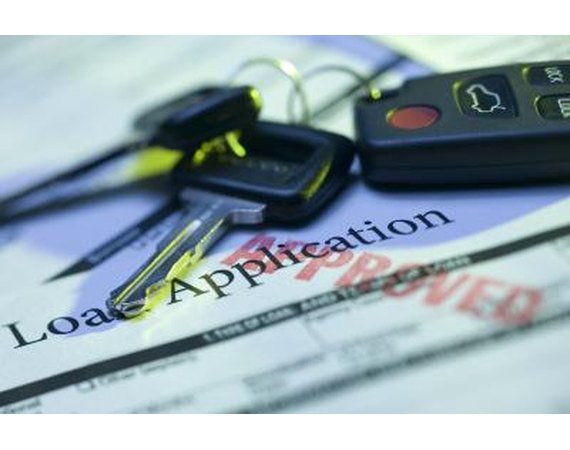
If you paid cash for your car or have already paid off the original bank loan, you own your car free and clear and have access to the title -- making selling the car to another individual a relatively simple process. If you're still making payments on your car and want to sell it, however, you can't sign over the car title to the buyer because you don't have the title. The bank will hold your vehicle's title until you pay off the loan balance you still owe. There are two methods for selling a car with a bank loan, depending on whether your lender holds your title at a local branch or out of state.
Instructions
Locally Held Title
- 1
Call the bank and notify the bank representative you speak with of your intentions to sell the car. Ask for a final payoff amount. Depending on whether your loan carries a prepayment penalty, the final payoff amount may differ from the amount reflected on your monthly statements.
2Meet the buyer at the bank branch that holds your car's title. Instruct the buyer to make the payment directly to the bank rather than to you. Provided the purchase price equals the amount you owe on the loan, the bank will then provide you with the title.
3Sign the car title over to the buyer. Fill out a bill of sale recording the date of the transaction and the purchase price.
4Ask a bank employee to make two copies of the bill of sale. Give one copy to the buyer and keep one copy for your records.
Title Held Out of State
- 5
Meet with the buyer and conduct the sales transaction without the title. Fill out three copies of the bill of sale. Give one to the buyer, keep one for yourself and keep one for the Department of Motor Vehicles.
6Visit the buyer's county's Department of Motor Vehicles with the buyer. Provide the DMV with a copy of the bill of sale. Request a temporary operating permit for the buyer until you can provide her with the car's title.
7Pay off the vehicle loan with the proceeds from the sale. The bank will mail you the title. How quickly you will receive the car title will vary depending on the bank.
8Sign your name on the title under "Seller" when you receive it in the mail. Deliver the car title to the buyer.




























